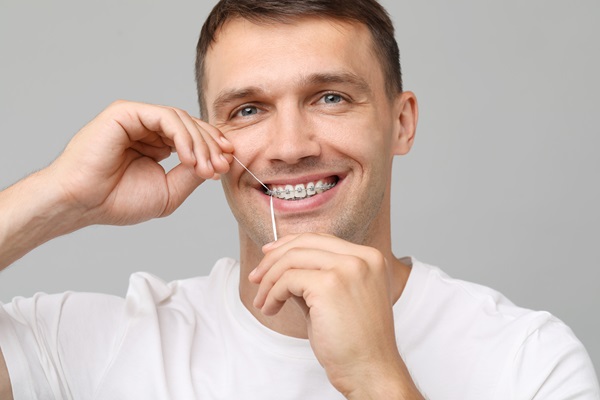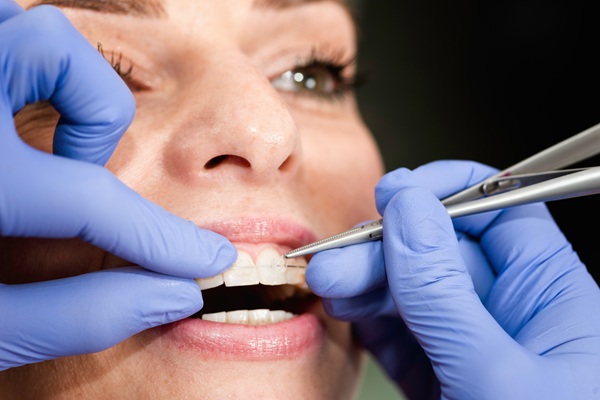Adult Braces: Key Things to Know

Orthodontic treatments are not just for children and teenagers. Adult braces are becoming increasingly popular due to advancements in orthodontic technology and the growing awareness of the importance of a healthy, well-aligned bite. For those considering adult braces, there are a few key things to remember before starting the journey toward a straighter smile.
Effects of misaligned teeth and how adult braces can help
Misaligned teeth have many downsides that often surpass poor smile aesthetics. These can include:
- Tooth decay and gum disease. Crooked or crowded teeth can make proper cleaning difficult, leading to plaque buildup, tooth decay, and gum disease.
- Jaw pain and discomfort. Misaligned teeth can cause issues with the bite, leading to jaw pain, headaches, and even temporomandibular joint (TMJ) disorders.
- Improved speech and chewing. For some, adult braces can help improve speech and make chewing more efficient, reducing strain on the teeth and jaw over time.
The orthodontist will choose each patient's most effective type of adult braces based on their unique needs. However, no matter the type, the primary aim is to improve the function and aesthetics of the teeth.
Types of adult braces
Many still think of braces as traditional metal hardware comprising metal brackets and wires affixed to the front of the teeth. While these are still viable teeth straightening options, they are not the only ones. Other types of adult braces include:
- Ceramic braces. These braces are similar to traditional braces in how they are applied to the teeth, but they use ceramic material and clear or tooth-colored brackets instead.
- Lingual braces. Like traditional braces, lingual braces comprise metal wires and brackets. However, they attach to the back of the teeth instead of the front.
- Self-litigating braces. These braces use a specialized mechanism, such as a sliding bracket, to hold the archwire in place without needing elastic ties, allowing for reduced friction.
- Clear aligners. Clear, custom, removable trays that patients must wear for a minimum of 22 hours a day as they provide gentle, constant pressure to the teeth and gums.
Treatment and time commitments
One common misconception about adult braces is that the treatment process is quicker than it is for teenagers. While some cases can be completed in a shorter time frame, many adult orthodontic treatments take 18 to 36 months to complete, depending on the severity of the misalignment and the type of braces chosen.
Life does not have to stop with adult braces. However, adjustments to everyday life are necessary. This includes maintaining oral hygiene, protecting the braces, and diet changes. It is crucial to brush and floss regularly to avoid cavities and gum issues during treatment.
Further, patients must protect the chosen hardware by wearing mouthguards (when necessary) and avoiding using their teeth as a tool, such as opening bottles or packages. Patients should also avoid sticky, chewy, and too-hard foods to prevent damage to the brackets or placing added or alternative pressure on the teeth and gums.
Call us for more information
Adult braces are an effective way to improve your teeth' appearance, function, and health. If you are interested in learning more about this form of orthodontics, contact our Dubuque office. We can schedule an appointment to determine which adult braces are most effective for you.
Request an appointment here: https://www.bracesbyabbadent.com or call Braces By Abbadent at (563) 484-5202 for an appointment in our Dubuque office.
Check out what others are saying about our services on Yelp: Adult Braces in Dubuque, IA.
Recent Posts
You may have seen someone wearing ceramic braces without even knowing it. These are most well-known for their discreet appearance and are ideal alternatives for patients who are concerned about how noticeable their braces would look. Read on to learn more about why ceramic braces are trusted among orthodontic professionals.Ceramic braces are among the most…
Space maintainers are great resources that are used in dentistry and orthodontics. They are small, metal dental pieces that are placed where a tooth once was, whether it be an adult or baby tooth. Keep reading to find out more about space maintainers.Outlined below are a few things to know about space maintainers, including what…
Teeth straightening is a popular dental procedure for people who want to improve their smile. There are several methods that people can choose from that can resolve a wide range of dental issues. If you want straighter teeth, you can definitely benefit from orthodontic treatment. Read on to learn about the different types of braces…
A pediatric dentist works with your child to treat their condition and teach them the importance of oral health from a young age. Misalignment and malocclusions are quite common in children and adolescents as their teeth develop. There are several reasons a child might require braces. Treating these conditions early on can help guide their…


